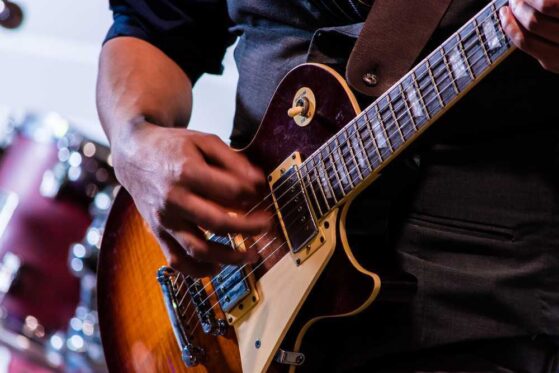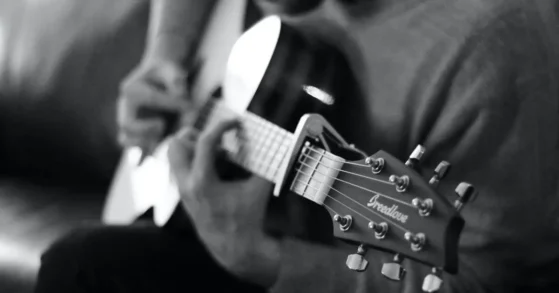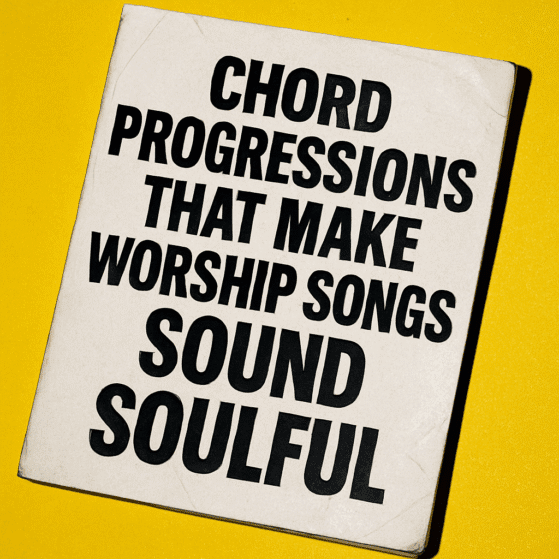How to Play and Write Riffs That Stand Out
Play and Write Riffs that stand out—it’s an art form that requires a mix of creativity, technical skill, and musical knowledge. Riffs are the heart and soul of many iconic songs. Whether in rock, pop, blues, jazz, or even some genres of classical, the riff often defines the character of a track. Think of classic riffs like the opening bars of Smoke on the Water by Deep Purple or the iconic riff from Sweet Child O’ Mine by Guns N’ Roses. These are not just parts of the songs; they are the song, the part that people hum, remember, and associate with the entire track.
In this blog, we’ll explore the key components and techniques to help you play and write riffs that are memorable, unique, and impactful.

Understanding the Power of Simplicity
Some of the most memorable riffs are incredibly simple. For example, “Day Tripper” by The Beatles or “Seven Nation Army” by The White Stripes — both use basic notes, but their impact is massive. A riff doesn’t need to be complex or filled with fast, intricate runs to stand out. Instead, focus on a memorable rhythm and a catchy melodic idea.
Start with something simple. Play a short, repeating phrase, and see how you can evolve it over time. The trick is in repetition: the more you hear it, the more it sticks.
Pro Tip: Use intervals like 4th, 5th, or octaves for a solid foundation. These intervals are easy to play and sound powerful in any context.

Leverage Rhythm and Timing
The rhythm of a riff is often what makes it instantly recognizable. It’s not just about the notes you play, but also the timing and groove you create. Pay attention to the spaces between the notes — these can be as important as the notes themselves.
For example, the way the opening riff of “You Really Got Me” by The Kinks hits with its off-beat pulse creates an infectious groove that hooks listeners. Similarly, Jimmy Page’s riff in “Whole Lotta Love” relies heavily on syncopation and accents.
Experiment with different rhythmic patterns, like triplets, syncopated rhythms, or playing with polyrhythms. This can give your riff a unique feel, which will make it stand out from the crowd.
Pro Tip: Try tapping your foot to create a solid groove, and then build your riff around it. This can help you feel the rhythm in your body and make it groove harder.

Use Unique Techniques
There are various guitar techniques you can incorporate to give your riff a signature sound. Some of the most impactful techniques include:
Hammer-ons and Pull-offs: These create smooth, connected notes and can be used to add fluidity to your riffs. For example, the riff in “Eruption” by Van Halen uses these techniques to create an almost legato-like feel.
Palm Muting: This is used in genres like metal and rock to give the riff a punchy, chuggy quality. Think of Metallica’s “Enter Sandman” or Nirvana’s “Smells Like Teen Spirit” for an example of palm-muted riffs.
Slides: Slides can add a sense of movement to your riffs. The use of slides in “Layla” by Eric Clapton is iconic, giving the riff an emotive quality that stands out.
Bends and Vibrato: Adding bends and vibrato to a riff can give it more character. It creates tension, which then resolves when the note is played in tune, offering a dynamic emotional journey.
The key to standing out with these techniques is not overdoing them. They should serve the riff, not take away from it. A well-placed bend or a quick hammer-on can add flavor and distinction to your riff.

Use of Scales and Modes
To write riffs that stand out, you need to think about the scales and modes you use. While the standard pentatonic scale is a go-to for many riffs, don’t be afraid to experiment with different scales and modes. For example:
Minor Pentatonic and Blues Scale: These are staples for rock, blues, and metal riffs. The slight “bluesy” feel from the b5 (blue note) can give your riffs a unique flavor.
Dorian Mode: The Dorian mode (a minor scale with a raised 6th degree) is great for creating riffs with a slightly brighter, more jazzy feel.
Mixolydian Mode: This mode, with its dominant 7th, can create a riff with a funky, rock-like sound, commonly used in blues rock.
Phrygian Mode: Known for its exotic, Spanish flavor, this scale can create riffs that sound unique and atmospheric.
Experiment with intervals and modes that are outside your usual comfort zone. A riff in a major scale can sound very different from one in a minor or diminished scale, and this difference can help your riff stand out.
Pro Tip: Try creating a riff by starting with a chord progression, and then experiment with different scales or modes over those chords. This is how many of the great riffs are created — by playing around with harmony and melody.

Creating Contrast
A great riff should offer some form of contrast to the rest of the song. This could be in terms of dynamics, tonality, or rhythm. Contrast gives the riff its own space to shine.
For instance, if your song has a lot of clean, open chords, a short, punchy riff played with distortion will stand out. Or, if your song has a fast-paced rhythm, a slower, more drawn-out riff could catch the listener’s ear.
Contrast can also be achieved through texture. If the verse of a song is filled with palm-muted, heavy riffs, try adding an open, ringing riff during the chorus. This gives the listener a sonic break and allows your riff to be more impactful.
Pro Tip: Create two versions of the same riff — one that is dense and one that is sparse — and see which works better for the section of the song you’re working on.

Melodic and Harmonic Considerations
While riffs are often rhythm-driven, adding a strong melody to the riff can make it unforgettable. This is especially true for guitar riffs that don’t just sit in the background, but rather drive the song forward. For example, the riff in “Smoke on the Water” is as melodic as it is rhythmic, making it one of the most recognizable riffs in rock history.
Similarly, consider how the riff interacts harmonically with the rest of the song. Try building a riff around a chord progression, and experiment with different harmonic tensions. A riff that hovers over a chord while bending notes or adding passing tones can add a distinct quality to it.
Pro Tip: When writing your riff, think about where the riff fits in the context of the song. Is it going to be part of a powerful, uplifting chorus? Or does it need to serve as the underlying tension during a more subdued verse? The harmonic setting of your riff can make all the difference in how it’s perceived.

Innovation Through Layering
Another way to make your riff stand out is by layering. When you play and write riffs, layering can be incredibly effective in creating a rich, multifaceted sound. This could mean adding subtle elements like extra guitar harmonies or using effects such as delay or reverb to give the riff more depth.
You can also layer different textures, such as using one guitar playing the main riff while another adds counter-melodies or fills. These layers create a more immersive sound and can add complexity to a riff while keeping the core idea intact.
Pro Tip: Start with a simple riff, then experiment with layering different instruments or effects on top of it. Don’t be afraid to use unconventional sounds to create a unique texture.

Emotional Impact
Above all, a riff must convey emotion. Think about the feeling you want to evoke with your riff. Is it aggression, joy, sadness, or something else? The way you approach your riff—through dynamics, tempo, and phrasing—can create a connection with the listener.
Riffs that stand out often resonate emotionally. They can be simple, but their emotional power makes them unforgettable. So, when you’re writing or playing a riff, think about the emotional essence you’re trying to capture. Whether it’s through the choice of scale, rhythm, or how you articulate each note, let the emotion drive the riff.

Conclusion
Creating a riff that stands out requires a balance of creativity, technical skill, and musical understanding. By focusing on rhythm, experimenting with different scales and modes, using unique techniques, and adding layers of contrast and emotion, you can write and play riffs that leave a lasting impression.
The key is to keep experimenting, trust your instincts, and above all, have fun with it. Some of the most iconic riffs were written spontaneously, often when musicians were simply exploring their instruments. So get your guitar (or any instrument) and start playing—who knows? The next unforgettable riff could be just around the corner!
Want to take your skills further? Join The Mystic Keys and learn to craft standout riffs with expert guidance. Start your musical journey today!
Related Blogs
How to Train Your Ear for Better
Guitar Playing
Want to improve your guitar playing? Learn how to train your ear to recognize chords, melodies, and harmonies, boosting your musical skills and confidence
How to Transition Smoothly Between Chords on Guitar
Struggling with chord transitions? Learn practical techniques to switch between chords smoothly, improve finger placement, and enhance your guitar playing skills.
Breaking Down Music Theory for Guitarists | The Easy Way
Struggling with music theory for guitar? Learn how to understand chords, scales, and keys easily with this beginner-friendly guide.








